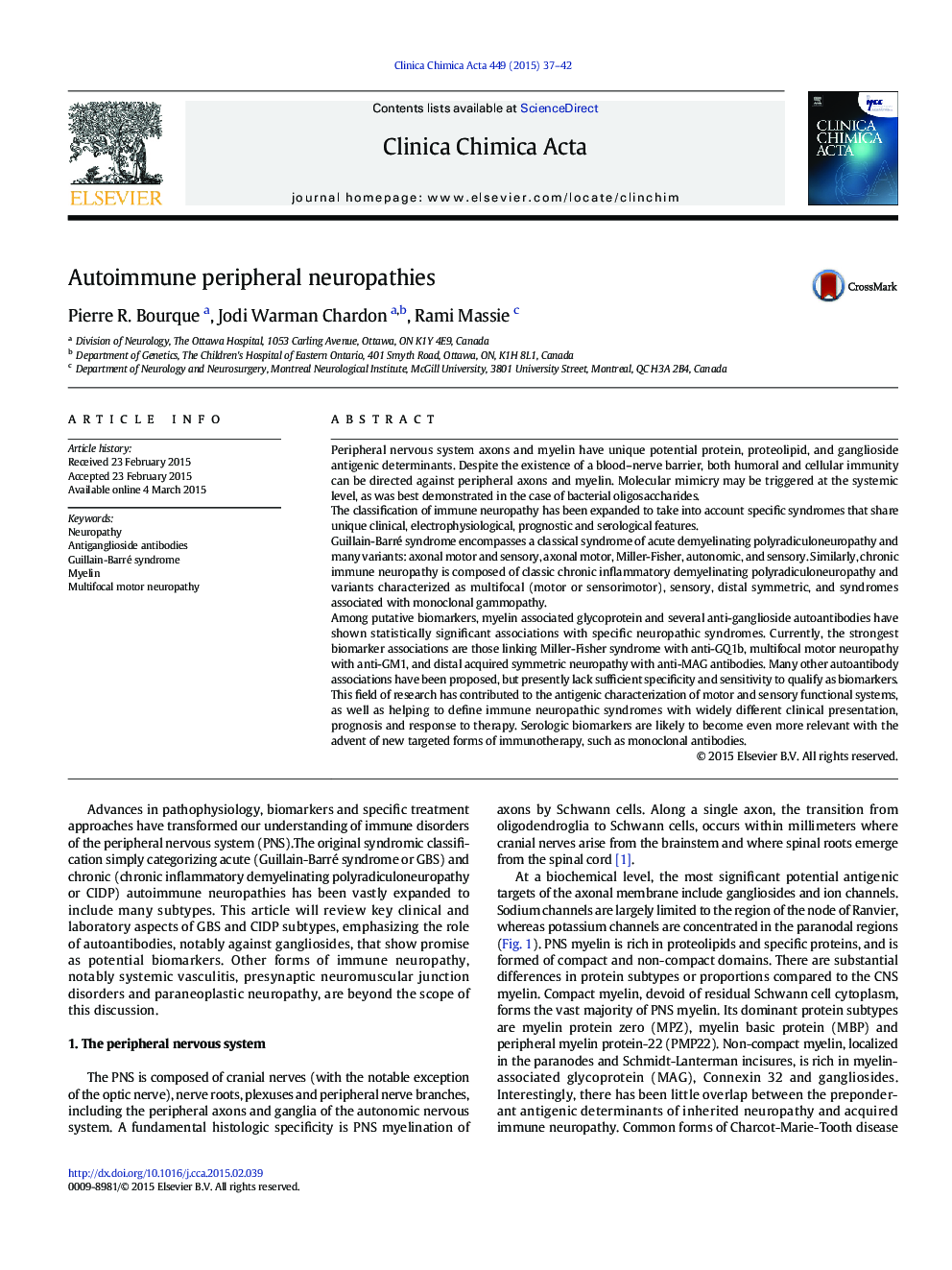| کد مقاله | کد نشریه | سال انتشار | مقاله انگلیسی | نسخه تمام متن |
|---|---|---|---|---|
| 1965257 | 1538649 | 2015 | 6 صفحه PDF | دانلود رایگان |
• Autoimmune attacks can be targeted at axonal and myelin antigens, despite the presence of a blood–nerve barrier.
• Guillain-Barré syndrome can be subdivided based on clinical pattern (regional, motor, sensory) and leading pathologic target (myelin, axon).
• Chronic inflammatory demyelinating neuropathy can be subdivided according to the clinical pattern (course, combined or selective motor involvement) and the presence of gammopathy.
• Antiganglioside antibodies presently help characterize only a subgroup of patients with immune neuropathy.
• The strongest immune neuropathy biomarker associations have been found in Miller-Fisher syndrome, multifocal motor neuropathy and anti-MAG neuropathy.
Peripheral nervous system axons and myelin have unique potential protein, proteolipid, and ganglioside antigenic determinants. Despite the existence of a blood–nerve barrier, both humoral and cellular immunity can be directed against peripheral axons and myelin. Molecular mimicry may be triggered at the systemic level, as was best demonstrated in the case of bacterial oligosaccharides.The classification of immune neuropathy has been expanded to take into account specific syndromes that share unique clinical, electrophysiological, prognostic and serological features.Guillain-Barré syndrome encompasses a classical syndrome of acute demyelinating polyradiculoneuropathy and many variants: axonal motor and sensory, axonal motor, Miller-Fisher, autonomic, and sensory. Similarly, chronic immune neuropathy is composed of classic chronic inflammatory demyelinating polyradiculoneuropathy and variants characterized as multifocal (motor or sensorimotor), sensory, distal symmetric, and syndromes associated with monoclonal gammopathy.Among putative biomarkers, myelin associated glycoprotein and several anti-ganglioside autoantibodies have shown statistically significant associations with specific neuropathic syndromes. Currently, the strongest biomarker associations are those linking Miller-Fisher syndrome with anti-GQ1b, multifocal motor neuropathy with anti-GM1, and distal acquired symmetric neuropathy with anti-MAG antibodies. Many other autoantibody associations have been proposed, but presently lack sufficient specificity and sensitivity to qualify as biomarkers. This field of research has contributed to the antigenic characterization of motor and sensory functional systems, as well as helping to define immune neuropathic syndromes with widely different clinical presentation, prognosis and response to therapy. Serologic biomarkers are likely to become even more relevant with the advent of new targeted forms of immunotherapy, such as monoclonal antibodies.
Journal: Clinica Chimica Acta - Volume 449, 20 September 2015, Pages 37–42
